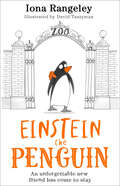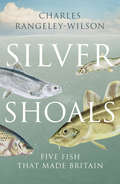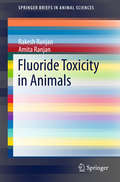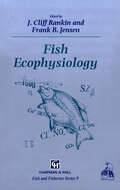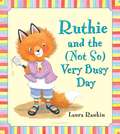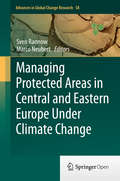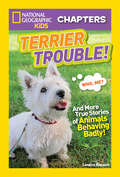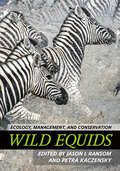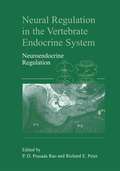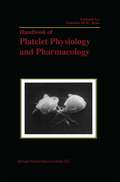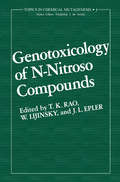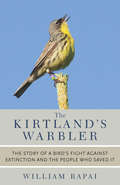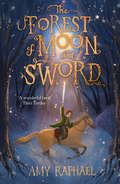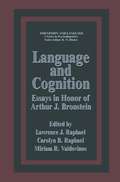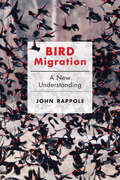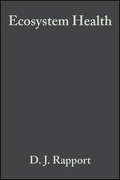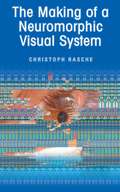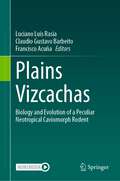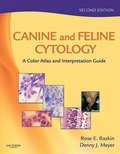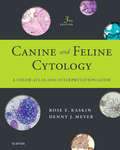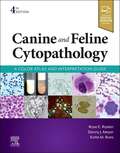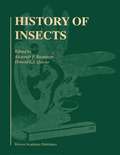- Table View
- List View
Einstein the Penguin
by Iona RangeleyPerfect for all readers from 7 to 70, Einstein the Penguin introduces an unforgettable new character in a future-classic and fantastically funny debut for all the family to enjoy. Get ready to welcome the most extraordinary penguin into your own home…
Silver Shoals: Five Fish That Made Britain
by Charles Rangeley-WilsonOn these rain-swept islands in the North Atlantic man and fish go back a long way. Fish are woven through the fabric of the country’s history: we depend on them – for food, for livelihood and for fun – and now their fate depends on us in a relationship which has become more complex, passionate and precarious in the sophisticated 21st Century.In Silver Shoals Charles Rangeley-Wilson travels north, south, east and west through the British Isles tracing the histories, living and past, of our most iconic fish – cod, carp, eels, salmon and herring – and of the fishermen who catch them and care for them. In the company of trawlermen, longshoremen, conservationists and anglers Charles goes to sea in a trawler, whiles away hot afternoons setting eel nets, tries to bag his first elusive carp and drifts for herring on Guy Fawkes night as fireworks starburst the sky. Underscoring this journey is a fascinating historical exploration of these creatures that have shaped our island story. We learn how abundant and valued these fish were centuries before our current crisis of over-fishing: we learn how eels built our monasteries, how cod sank the Spanish Armada, how fish and chips helped us through two World Wars. Of course there is a deeper environmental dimension to the story, but Charles' optimistic perspective is this: no one is more invested in fish than the fishermen whose lives depend on them. If we can find a way to harness that passion then the future of fish and fishermen in Britain could be as extraordinary as its past.
Fluoride Toxicity in Animals (SpringerBriefs in Animal Sciences)
by Rakesh Ranjan Amita RanjanThis book describes in detail various aspects of fluoride toxicity in animals. Animals, like human beings, suffer from the toxic effects of excess fluoride intake. They show pathological changes in their teeth and bone, together with a marked reduction in appetite, productive and reproductive potentials, which can result in severe economic losses in the dairy industry. Laboratory and wild animals also suffer from this ailment. Animal suffering and economic losses alike can be minimized through early diagnosis of the problem and by adopting suitable preventive and therapeutic measures. The book details the susceptibility of different animal species, important sources of toxicity, clinical signs and symptoms, pathophysiology, diagnostic methods, preventive and therapeutic approaches. It offers a valuable resource for scientists working in the fields of toxicology, veterinary science, animal nutrition, and environmental science, as well as for public health workers, animal welfare activists, public health veterinarians, field veterinarians, medical professionals and all others interested in the subject.
Fish Ecophysiology (Fish & Fisheries Series #9)
by J.C. Rankin Frank B. JensenAmong the fishes. a remarkably wide range of biological adaptations to diverse habitats has evolved. As well as living in the conventional habitats of lakes. ponds, rivers, rock pools and the open sea, fish have solved the problems of life in deserts. in the deep sea. in the cold antarctic. and in warm waters of high alkalinity or of low oxygen. Along with these adaptations, we find the most impressive specialisations of morphology, physiology and behaviour. For example we can marvel at the high-speed swimming of the marlins. sailfish and warm-blooded tunas, air-breathing in catfish and lungfish. parental care in the mouth-brooding cichlids and viviparity in many sharks and toothcarps. Moreover, fish are of considerable importance to the survival of the human species in the form of nutritious. delicious and diverse food. Rational exploi management of our global stocks of fishes must rely upon a detailed tation and and precise insight of their biology. The Chapman [.,. Hall Fish and Fisheries series aims to present timely volumes reviewing important aspects of fish biology. Most volumes will be of interest to research workers in biology. zoology. ecology and physiology but an additional aim is for the books to be accessible to a wide spectrum of non-specialist readers ranging from undergraduates and postgraduates to those with an interest in industrial and commercial aspects of IIsh and t1sheries.
Ruthie and the (Not So) Very Busy Day
by Laura RankinIt's Saturday morning-Ruthie's very favorite day. No school. No homework. No practices. Just a day to be with Mom and Dad. And Ruthie has BIG plans with her day off. But they keep getting interrupted. Dad has to go off to help Grandma. Mom has errands to run. Poor Ruthie is suddenly having the worst day ever! Will things ever look up? And can Ruthie manage to find any fun on her favorite day? Old and new fans alike will find much to love in this new Ruthie picture book, which stresses the importance of taking a break from the hustle and bustle to enjoy cozy family time.
Ruthie and the (Not So) Very Busy Day
by Laura RankinIt's Saturday morning-Ruthie's very favorite day. No school. No homework. No practices. Just a day to be with Mom and Dad. And Ruthie has BIG plans with her day off. But they keep getting interrupted. Dad has to go off to help Grandma. Mom has errands to run. Poor Ruthie is suddenly having the worst day ever! Will things ever look up? And can Ruthie manage to find any fun on her favorite day? Old and new fans alike will find much to love in this new Ruthie picture book, which stresses the importance of taking a break from the hustle and bustle to enjoy cozy family time.
Managing Protected Areas in Central and Eastern Europe Under Climate Change (Advances in Global Change Research #58)
by Sven Rannow Marco NeubertBeginning with an overview of data and concepts developed in the EU-project HABIT-CHANGE, this book addresses the need for sharing knowledge and experience in the field of biodiversity conservation and climate change. There is an urgent need to build capacity in protected areas to monitor, assess, manage and report the effects of climate change and their interaction with other pressures. The contributors identify barriers to the adaptation of conservation management, such as the mismatch between planning reality and the decision context at site level. Short and vivid descriptions of case studies, drawn from investigation areas all over Central and Eastern Europe, illustrate both the local impacts of climate change and their consequences for future management. These focus on ecosystems most vulnerable to changes in climatic conditions, including alpine areas, wetlands, forests, lowland grasslands and coastal areas. The case studies demonstrate the application of adaptation strategies in protected areas like National Parks, Biosphere Reserves and Natural Parks, and reflect the potential benefits as well as existing obstacles. A general section provides the necessary background information on climate trends and their effects on abiotic and biotic components. Often, the parties to policy change and conservation management, including managers, land users and stakeholders, lack both expertise and incentives to undertake adaptation activities. The authors recognise that achieving the needed changes in behavior – habit – is as much a social learning process as a matter of science-based procedure. They describe the implementation of modeling, impact assessment and monitoring of climate conditions, and show how the results can support efforts to increase stakeholder involvement in local adaptation strategies. The book concludes by pointing out the need for more work to communicate the cross-sectoral nature of biodiversity protection, the value of well-informed planning in the long-term process of adaptation, the definition of acceptable change, and the motivational value of exchanging experience and examples of good practice.
National Geographic Kids Chapters: And More True Stories Of Animals Behaving Badly (National Geographic Kids Chapters)
by Candice Ransom National Geographic KidsMeet a thieving emu, a devious cat, and a pesky pup in these hilarious tales about animals who love to play tricks, create chaos, and run a bit wild.
Wild Equids: Ecology, Management, and Conservation
by Jason I. Ransom Petra KaczenskyWild horses, zebras, asses, and feral equines exhibit intriguing and complex social structures that captivate the human imagination and elicit a wide range of emotions that influence conservation and management efforts. This book, spearheaded by Jason I. Ransom and Petra Kaczensky, brings together the world's leading experts on equid ecology, management, and conservation to provide a synthesis of what is known about these iconic species and what needs to be done to prevent losing some of them altogether. The most comprehensive conservation book on wild equids in decades, this title will enlighten not only equid researchers, but also mammalogists, conservationists, and equine professionals. Readers will find new insight into the lives of the world's horses, zebras, and asses, understand the basis of our relationships with these animals, and develop a greater understanding of where equids come from and why they are worth conserving.Included in this book are detailed, state-of-the-science syntheses on Social structure, behavior, and cognition Habitat and diet Ecological niches Population dynamics Roles of humans in horse distribution through time Human dimensions and the meaning of wild Management of free-roaming horses Captive breeding of wild equids Conservation of wild equids Conservation of migrations Reintroductions Genetics and paleogenetics
Wild Equids: Ecology, Management, and Conservation
by Jason I. Ransom Petra KaczenskyWild horses, zebras, asses, and feral equines exhibit intriguing and complex social structures that captivate the human imagination and elicit a wide range of emotions that influence conservation and management efforts. This book, spearheaded by Jason I. Ransom and Petra Kaczensky, brings together the world's leading experts on equid ecology, management, and conservation to provide a synthesis of what is known about these iconic species and what needs to be done to prevent losing some of them altogether. The most comprehensive conservation book on wild equids in decades, this title will enlighten not only equid researchers, but also mammalogists, conservationists, and equine professionals. Readers will find new insight into the lives of the world's horses, zebras, and asses, understand the basis of our relationships with these animals, and develop a greater understanding of where equids come from and why they are worth conserving.Included in this book are detailed, state-of-the-science syntheses on Social structure, behavior, and cognition Habitat and diet Ecological niches Population dynamics Roles of humans in horse distribution through time Human dimensions and the meaning of wild Management of free-roaming horses Captive breeding of wild equids Conservation of wild equids Conservation of migrations Reintroductions Genetics and paleogenetics
Neural Regulation in the Vertebrate Endocrine System: Neuroendocrine Regulation
by Dodla Sai Prasada Rao Richard E. PeterHandbook of Platelet Physiology and Pharmacology
by Gundu H. R. RaoThis is the first comprehensive work to review blood platelet biochemistry, physiology, pharmacology, and function. It provides up-to-date information on how platelets function, the biochemical mechanisms that modulate their physiology and function, as well as the pharmacology of platelet inhibitory drugs.
Genotoxicology of N-Nitroso Compounds (Topics in Chemical Mutagenesis)
by T. RaoToph's in Chemical Mutagenesis is a new series dedicated to studies in the areas of environmental chemical mutagenesis and genetic toxicology. In this series we will explore some of many topics that are emerging in these rapidly developing fields. The purpose of the present volume is to attempt to organize and compare the genotoxic properties of the N-nitroso compounds. This is a particularly interesting class of compounds because of the problems encountered with the Salmonella assay of Ames in generating both false positive and false negative results. The battery approach using a number of assay systems seems more appropriate to evaluate chemicals in this class. Topics to be discussed in other volumes in this series include single-cell mutation monitoring systems, the detection of genetic damage in mammalian germ cells, the mutagenicity of pesticides, problems in monitoring human populations in genetic toxicology, and a glossary of terms in genetic toxicology. All of these books are in various stages of development and should appear within the next few years. Frederick J. de Serres Series Editor vii Preface During the past ten years there has been an explosive development in the number of short-term tests to predict the biological risks, especially risks of cancer, in exposure to xenobiotic chemicals. The number of published articles in this area has reached many thousands a year and there are several new journals devoted almost entirely to the presentation of the results obtained in these tests.
The Kirtland's Warbler: The Story of a Bird's Fight Against Extinction and the People Who Saved It
by William RapaiThis book looks at the Kirtland’s warbler and wildlife conservation in a way that no other book has. It looks back on the history of this unique bird, examines the people and policies that kept the warbler from extinction, explores the cult of personality that surrounds it, and examines the challenges of the future—all through the eyes of the people who have acted so passionately on its behalf. The story of the Kirtland’s warbler is a story of complex relationships between the bird and its environment, the humans who interact with it, and the complex government policies that affect it. And now, just when it appears that the Kirtland’s warbler has recovered for good, a change in its status may send the warbler’s population into a downward spiral once again.
The Forest of Moon and Sword
by Amy Raphael'A wonderful book' PIERS TORDAY'Very exciting' ANTHONY MCGOWAN When Art's mother is accused of witchcraft and captured, she is determined to get her back - at any cost. A lyrical adventure with folklore at its heart, for fans of THE HOUSE WITH CHICKEN LEGS.Twelve-year-old Art lives in a small village in Scotland. Her mother has always made potions that cure the sick, but now the townspeople say she is a witch. One cloudless night, Art's mother is arrested and taken to England. Art mounts her horse, taking a sword, a tightrope, and a herbal recipe book, and begins a journey through wild forests, using nature's signs and symbols to guide her.But will she spot the signs from the omens? Will she reach her mother, before it's too late?'Gripping. I raced through it' - A.M. Howell, author of The Garden of Lost Secrets
Language and Cognition: Essays in Honor of Arthur J. Bronstein (Cognition and Language: A Series in Psycholinguistics)
by Lawrence J. RaphaelWe are pleased to be able to honor Arthur J. Bronstein with this volume of essays. We are all the more pleased because the volume has consider able intrinsic merit, but neither the reader nor Arthur should have any doubts about our primary purpose in assembling this book. That the col lection is intrinsically valuable is, in itself, a tribute to the man whom it honors: The contributing authors are all colleagues, students, and friends of Arthur. Readers who are acquainted with Arthur will not be surprised by the broad range of academic expertise which has been brought to bear on the subject of language in this book. They will recognize that Arthur's own range of expertise and interest is only barely matched by the contents of the essays and the backgrounds of their authors. On the other hand, those who know little about Arthur may have thought of him primarily in narrow association with phonetics and lin guistics, most likely as the author of The Pronunciation of American English, surely the most influential of American phonetics texts during the last quarter of a century. Although such an association is in many respects appropriate, it is altogether too limited, but this will not deter us from using it as the basis for a relevant and, we hope, revealing metaphor about Arthur J.
Bird Migration: A New Understanding
by John H. RappoleA fascinating and nuanced exploration of why, how, and which birds migrate.Bird migration captivates the human imagination, yet for most of us, key aspects of the phenomenon remain a mystery. How do birds sense the ideal moment to take wing, and once the epic journey has begun, how do they find their distant destinations? Fresh insights about avian movements are still constantly emerging, powered by new tools like molecular genetics and transmitter miniaturization. In this book, renowned ornithologist and author John H. Rappole reveals intriguing results of recent scientific studies on migration, explaining their importance for birders, nature lovers, and researchers alike. Debunking misconceptions about the lives of birds that have persisted for thousands of years, Rappole explores unexpected causes and previously misunderstood aspects of the annual migration cycle. From the role of migrating birds in zoonotic disease transmission to climate change's impact on migration patterns, Rappole tackles crucial questions and ensures that readers come away with a new understanding of why and how birds migrate.
Bird Migration: A New Understanding
by John H. RappoleA fascinating and nuanced exploration of why, how, and which birds migrate.Bird migration captivates the human imagination, yet for most of us, key aspects of the phenomenon remain a mystery. How do birds sense the ideal moment to take wing, and once the epic journey has begun, how do they find their distant destinations? Fresh insights about avian movements are still constantly emerging, powered by new tools like molecular genetics and transmitter miniaturization. In this book, renowned ornithologist and author John H. Rappole reveals intriguing results of recent scientific studies on migration, explaining their importance for birders, nature lovers, and researchers alike. Debunking misconceptions about the lives of birds that have persisted for thousands of years, Rappole explores unexpected causes and previously misunderstood aspects of the annual migration cycle. From the role of migrating birds in zoonotic disease transmission to climate change's impact on migration patterns, Rappole tackles crucial questions and ensures that readers come away with a new understanding of why and how birds migrate.
Ecosystem Health: Principles and Practice
by D. J. Rapport Connie L. Gaudet R. Constanza P. R. Epstein R. LevinsEcosystem Health presents information to help the environmental sciences community further understand the relationships between ecosystem health and human health. By exploring preventative, diagnostic and prognostic aspects of ecosystem management and using case-study examples, the book takes the reader from theory to practice in this emerging integrative science.
Plains Vizcachas: Biology and Evolution of a Peculiar Neotropical Caviomorph Rodent
by Luciano Luis Rasia Claudio Gustavo Barbeito Francisco AcuñaThe plains vizcacha (Lagostomus maximus) is a remarkable rodent of the Neotropic given several peculiar aspects of its biology, some of them quite unique among rodents or even among mammals. This book gathers specialists studying plains vizcachas from very different approaches, including paleontology, systematics, morphology, physiology, development and conservation. It is divided in two Parts, 1) Evolutionary History, and 2) Morphology, Development and Physiology. It will surely be a required reading for any researcher working with caviomorph rodents, mastozoology of the Neotropics or internal anatomy and physiology of mammals.
Canine and Feline Cytology - E-Book: A Color Atlas and Interpretation Guide
by Rose E. Raskin Denny MeyerMaster the art and science of specimen collection, preparation, and evaluation with Canine & Feline Cytology: A Color Atlas and Interpretation Guide, Second Edition. This easy-to-use guide covers all body systems and fluids including a special chapter on acquisition and management of cytology specimens. Hundreds of vivid color images of normal tissue alongside abnormal tissue images – plus concise summaries of individual lesions and guidelines for interpretation - will enhance your ability to confidently face any diagnostic challenge. A greatly expanded image collection, with more than 1,200 vivid, full-color photomicrographic illustrations depicting multiple variations of normal and abnormal tissue for fast and accurate diagnosis Clear, concise descriptions of tissue sampling techniques, slide preparation and examination guidelines Helpful hints for avoiding technical pitfalls and improving diagnostic quality of specimens Includes all body systems and fluids as well as pathological changes associated with infectious agents Histologic and histopathologic correlates provided in all organ system chapters. User-friendly format and logical organization facilitates readability and learning. Expert contributors represent the most respected leaders in the field. NEW! Chapter on Fecal Cytology Highlighted boxes featuring Key Points provide helpful tips for best conceptual understanding and diagnostic effectiveness Photomicrographs now include more comparative histology Discussions of broader uses of stains and immunocytochemistry for differential cytologic characterization Expanded chapter on Advanced Diagnostic Techniques includes more methodology and application of current tools, representing advances in both aspiration and exfoliative cytology.
Canine and Feline Cytology - E-Book: A Color Atlas and Interpretation Guide
by Rose E. Raskin Denny Meyer"This is a ‘go-to’ reference text for a serious cytologist. " Reviewed by: Kathleen Tennant on behalf of Veterinary Record, November 2015Comprehensive coverage of all body systems and body fluids — and the pathological changes associated with various infectious agents — emphasizes areas in which the application of cytology has the greatest diagnostic value.Exceptional-quality, full-color photomicrographs show both normal and abnormal tissue and also include detailed legends.Discussions of clinical, differential, and cytological diagnosis accompany the illustrations of lesions and conditions in each chapter.Helpful hints for improving specimen quality are provided in discussions of common errors and problems encountered in the preparation of cytological specimens.Coverage of histology in organ system chapters demonstrates the histological or histopathologic corollary of cytologic findings.Clear, concise descriptions include sampling techniques, slide preparation and examination, and guidelines for interpretation, leading to accurate in-house and commercial laboratory diagnosis.Easy-to-use, well-organized format includes many tables, algorithms, boxes, and Key Point callouts for at-a-glance reference. NEW examples and identifiers and a new discussion on artifacts address the latest developments in canine and feline cytology.NEW! Dozens of new images include photomicrographs of blood and bone marrow cytology.NEW! All-new appendix summarizes clinically relevant information on artifacts, special tests, specific characteristics, and much more.UPDATED sampling techniques and examination guidelines include information on how and where to test for specific conditions.
Canine and Feline Cytopathology - E-Book: A Color Atlas and Interpretation Guide
by Rose E. Raskin Denny Meyer Katie. M BoesCanine and Feline Cytopathology: A Color Atlas and Interpretation Guide, 4th Edition provides a comprehensive overview of diagnostic cytopathology for companion animals, covering all body systems and fluids. Rapidly resolve diagnostic challenges with this guide to specimen collection and evaluation, featuring more than 2,400 photomicrographs that show cytology of normal structures to contrast and support identification of cytopathology of inflammatory, hyperplastic, and neoplastic lesions. Enhancements to this edition include hundreds of new images with crisper quality and truer colors; new chapters on the pancreas and ear; updated, contemporaneously referenced information for all chapters; expanded listing for neoplastic and infectious disease testing, quality assurance, and reporting; and access to a fully searchable enhanced eBook with new print purchase. Written by seasoned veterinary cytopathologists and award-winning educators Rose Raskin, Denny Meyer, and Katie Boes, with contributions from 20 international experts, this reference offers clear, practical guidelines to sampling procedures, slide preparation, and interpretation leading to diagnoses and/or classification of the cytopathologic findings. Anticipate the expected and expect the unexpected with this atlas, which vividly illustrates the expected cytologic elements associated with the organ system and provides abundant examples of unexpected cytopathologic findings. Comprehensive coverage of all body systems and body fluids emphasizes the application of aspirate biopsy cytopathology for greatest diagnostic impact. Exceptional-quality, full-color photomicrographs include detailed figure legends. Helpful hints for improving specimen quality are provided in discussions of common errors and problems, resulting in more diagnostically effective, cost-effective use of cytopathology. Discussions of clinical findings, differential diagnostic considerations, and the rationale are included for the final cytopathological diagnosis. Additional photomicrographs in organ system chapters demonstrate the histological or histopathologic corollary of cytopathologic findings. Easy-to-use, well-organized format includes many tables, algorithms, boxes, and Key Point callouts for at-a-glance reference. Clear, concise descriptions include sampling techniques, slide preparation and examination, and guidelines for interpretation, leading to accurate in-house and commercial laboratory diagnosis. Extensively revised organ system-based chapters include focused contemporary references. NEW! 700 crisp, all-new images more closely match the colors representative of the actual microscopic view. NEW! Expanded content combines coverage of the exocrine and endocrine pancreas and adds a new emphasis on the ear, specifically otic sample collection and cytopathology. NEW! All-new appendices provide quick reference to infectious agents, immunocytochemistry, reporting, molecular and immunologic testing, quality assurance, and more. NEW! Enhanced eBook is included with each new print purchase, providing access to a fully searchable text online — available on a variety of devices.
History of Insects
by A. P. Rasnitsyn Donald L. QuickeThis is the first single book to cover the whole of the fossil history of insects so comprehensively. The volume embraces subjects from the history of insect palaeontology to the diagnostic features of all insect orders, both extant and extinct.
